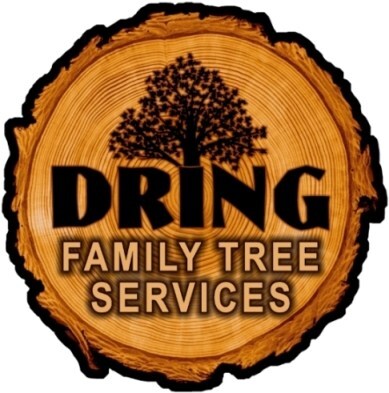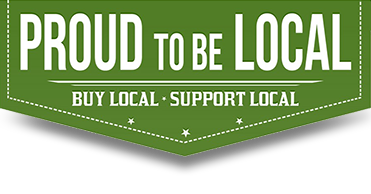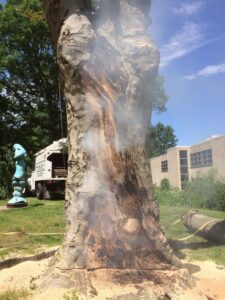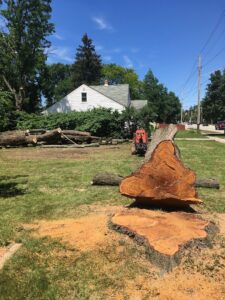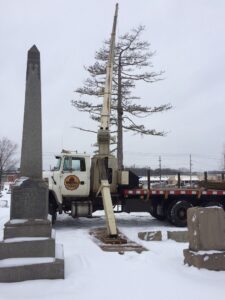Why cut a tree down?
We strongly prefer to save a tree, rather than cut it down. However, there are times when tree removal is necessary, such as:
The tree that is dead or dying.
Dangerous of hazardous trees that could harm people or property.
Trees that are planted too closely and are overcrowded.
Trees growing too close to buildings or power lines.
Trees that have been damaged by storms.
Reasons to remove a tree
Removing a tree can be a delicate process. Trees are rarely out in the open and removing them carelessly can cause damage to other trees, homes, and nearby structures.
You need a Certified Arborist that understands not only the value you place on your home and your landscape, but also has the best interests of your trees in mind. Dring Family Tree takes that responsibility very seriously.
Tree Removal for Hazards
When a tree is dead or dying, it can pose a threat to your home, guests, and landscaping. Instead of waiting for the tree to come down, Dring Family Tree professional tree care staff will assess the situation and carefully remove the tree without damage to your yard.
Tree Removal for Growth
Sometimes trees grow so close together that none of them are thriving. In that case, our certified arborists can assess your lot to determine which trees should be removed to encourage the growth of the other species in the area. Our experience will help your yard to experience new growth.
Tree Removal to Protect You
Many homeowners think that removing a tree is a simple process. In fact, it can be quite dangerous. Don’t take a chance. Let our tree care specialists use their experience to remove the tree without injury to you or your family.
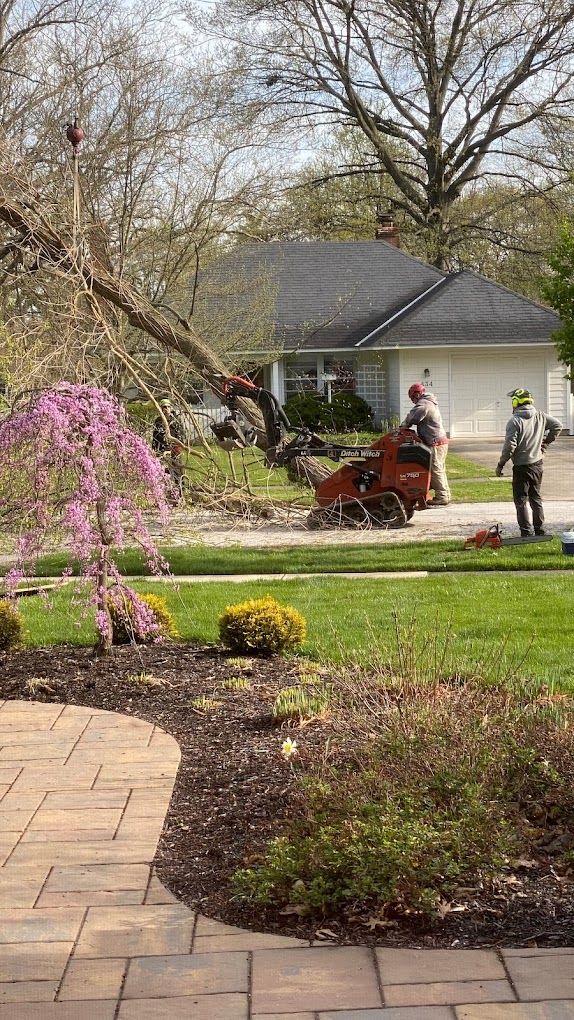
How we remove a tree
When removal is necessary, we are well equipped to take care of any size and situation. No tree is too large or too difficult for our skilled and experienced crew!
Before deciding on the best tree removal method for your tree, we first consider several factors. Things we look at include:
Where is the tree located? Is it close to a building or other structure that might get in the way or that could be damaged during the removal process?
How easily can the tree be accessed with our heavy equipment? Is there landscaping that will obstruct access or need to be repaired afterward? How about irrigation lines, sprinkler heads, underground oil tanks, and septic tanks or fields?
Is the tree structurally stable? Can it be safely climbed, or will the job require a crane or bucket truck?
How large is the tree?
Is there enough space to drop the branches? How about enough space to simply fell the tree?
What species of tree is it? For example, dead ash trees (such as ones killed by Emerald Ash Borer) are more dangerous than many others because they become extremely brittle and prone to unexpected failure.
Are there any power lines, cables, or other objects in the tree canopy? These will need to be removed (or, in the case of power lines, the power must be turned off).
After a careful inspection of your tree(s), our Certified Arborists determine the best way to take it down. We typically use a variety of heavy equipment, such as a crane and bucket truck, as well as climbing the tree to selectively remove parts that could otherwise pose a danger to the ground crew.
